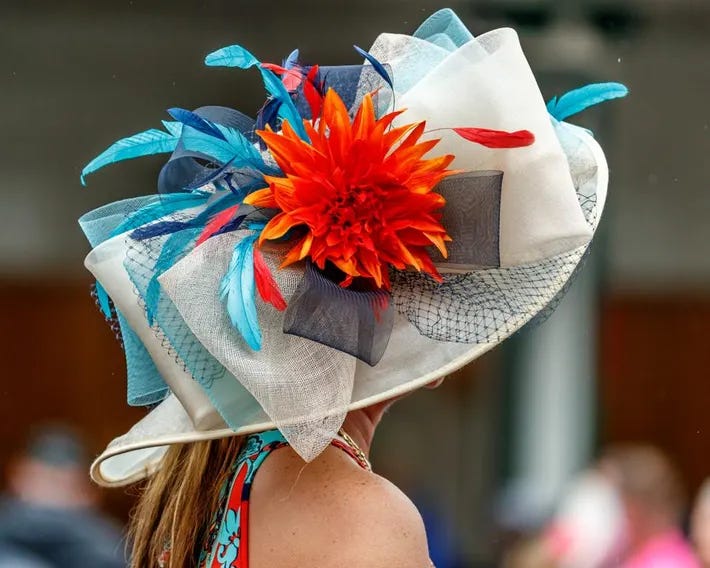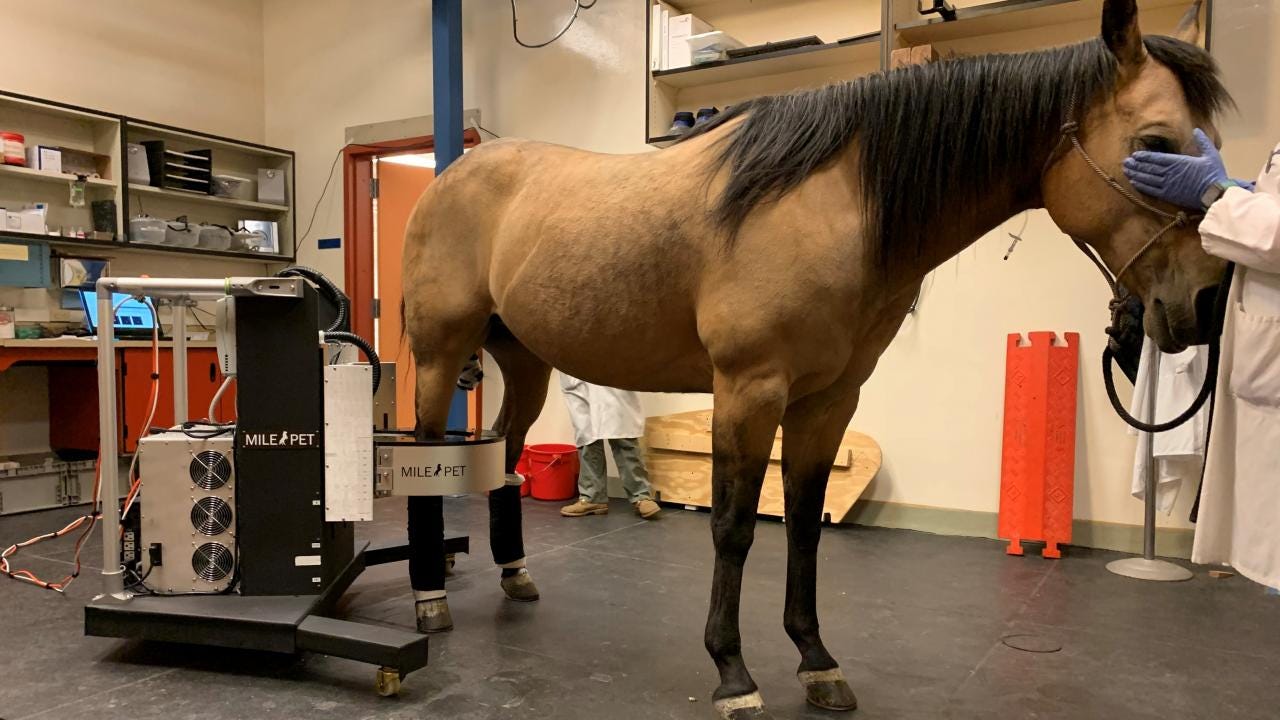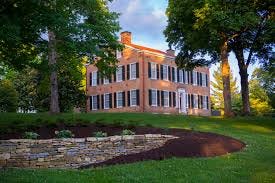I Still Haven't Found a Hat for the Derby
So In the meantime, let's address the elephant in the room...
The Kentucky Derby is just around the corner. And, for the first time in my almost 60 years, I will be in sitting in the crowd. My husband and I haven’t started looking for our ‘Kentucky Derby Fit’ as the cool kids would say… But, we have a few ideas for what we want to wear… Stay tuned.
Even so, in a little more than a month, we will be sitting amongst the crowd of the famous and not-so-famous, the professional horse people, the book makers, college students and everyone in between. We will take in the sights, sounds and smells that Churchill Downs has to offer.
Matt and I both grew up in Kentucky. We’ve never had an opportunity to go to the derby before because horse vets tend to be very busy in the springtime. From a very young age, this event was something we learned about in school. We watched it on television on the first Saturday in May, never able to make it through, “My Old Kentucky Home” without choking up. It made us proud to be Kentuckians.
However, you might have questions as to why we would be as excited this year. Why would we want to attend in light of what happened last year? In case you missed it, there were 7 breakdowns at Churchill Downs during the Kentucky Derby festivities. It was devastating. It was so bad that Churchill Downs shut down the track pending an investigation. Horse Racing Integrity and Safety Authority (HISA) along with Kentucky Horse Racing Commission began an investigation into the rash of deaths.
There was a lot of bad press and even calls for the end of horse racing. I will admit that the number of deaths was startling. It made me ask questions. I hoped they’d find an answer. I wanted there to be ‘a bad guy’ someone we could banish and our problems would be solved. That was not the case. There was no smoking gun.
A news conference reported that there were several different factors. The HISA 200 page report found no one single reason for the breakdowns. The study focused on 3 factors: track surfaces, veterinary records and necropsy reports.
Track surfaces have long been studied and now an advisory group has been formed to keep an eye on them should the need arise in the future. Necropsy exams (like an autopsy in humans) look for patterns such as micro fractures that might not be seen on bone scans. They look for common themes in breakdowns. And, pre-race exams focus on previous lameness or weakness in the horse. This has led to the use of standing PET Scans to find those micro fractures that bone scans couldn’t detect. Santa Anita installed a PET Scan last December and has had very good results.
While I am no expert on any of these matters, I have had horses for almost 38 years. When I walked out my back door there were no more than 50 steps to the barn. I’ve also observed a few things while working in an equine veterinary clinic and I’d like to share these things in order to offer a bit of balance to the story.
One of the biggest things that I’ve noticed over the 25 years of working in the clinic is that the further that we get as a society from the family farm, the less we seem to know and understand about horses. As the years go by and farmland is developed into neighborhoods, there are fewer people who have grown up with horses. New owners may know very little about raising horses.
As someone who didn’t grow up with a horse but acquired a working knowledge of them in adulthood, I’d love to share a bit of what I’ve learned both on the farm and in the clinic throughout the years to offer a perspective that you don’t get in most articles that you read.
At birth, horses stand and run within a couple hours. Every morning when we turned our horses out on pasture they would take off running (and farting) as soon as we took their halters off, running laps until they stopped to graze.
Horses love to run fast. I learned this bit of information when my daughter rode a cross country event and forgot her gloves. She had blisters on her fingers that held the reins from the tension of trying to hold him back from running full speed.
Last summer, I took a tour of Darley Stallion at Jonabell Farm in Lexington and watched two ex-racehorses who’d run against one another on the track, race each other in their individual paddocks that were just across a driveway from each other on the farm. The tour guide said that they did this almost everyday without any prompting.
Horses get hurt on the farm. They breakdown in pastures on the farm, despite the best efforts of owners. On our small farm, over 15 years out of our 15 horses, we’ve had 3 fractures, one fatal and one only pasture sound afterward. Veterinarians don’t keep these stats like they do on the track. But horses break down on farms in their own pastures too.
A racetrack veterinarian once explained to me that when you have a prey animal who spooks at most everything, weighing at least 1,000 pounds then it’s important to consider that their mass X force X acceleration can cause some devastating results.
While should do everything that we can to prevent deaths, there needs to be balance. I’ve heard my husband tell clients who are so afraid of disaster that they can’t bubble wrap their horses. Too much caution creates other problems. You have to let a horse be a horse.
We need horses. They help us physically, emotionally and spiritually. I would hate it if one day we had to visit them from behind the bars of a zoo. Horses have so much to offer humans.
I feel good about the work that is being done to protect horses. As a Kentucky girl, I’ll never forget cheering for Secretariat, sitting in front of the television set with my dad. This year I get to be at Churchill Downs in-person, vicariously living out a dream that my dad never realized. That is why I am excited to go to the Kentucky Derby to support the horse.







My uncle died of a heart attack at Churchill Downs? He had a box at the finish line in Evansville for many years. He loved horses so this story was very interesting